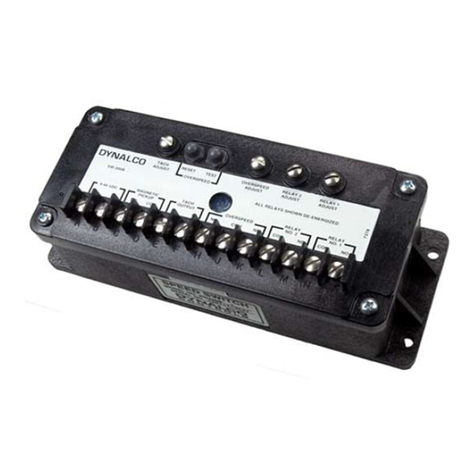
1
IMPORTANT - PLEASE READ BEFORE PROCEEDING!
The Dynalco SST7000 series speed switch / transmitter is designed for reliable and
rugged operation. This product has been designed and tested to meet the demands
required in many industrial and hazardous locations. Performance of this product is
directly related to the quality of the installation and knowledge of the user in operating
and maintaining the instrument. To ensure continued operation to the design
specifications, personnel should read this manual thoroughly before proceeding with
installation, operation and maintenance of this instrument. If this product is used in a
manner not specified by Dynalco, the protection provided by it against hazards may be
impaired.
WARNING
•
Failure to follow proper instructions may cause any one of the following
situations to occur: Loss of life; personal injury; property damage; damage to
this instrument; and warranty invalidation.
•
For clarification of instructions in this manual or assistance with your
application, contact Dynalco at (800) 368-6666 or (954) 739-4300 or send email to
customerservice@dynalco.com
•
Additional manuals are available at www.dynalco.com
•
Follow all warnings, cautions, and instructions marked on and supplied with the
product.
•
Use only qualified personnel to install, operate, program and maintain the
product.
•
Educate your personnel in the proper installation, operation, and maintenance of
the product.
•
Install equipment as specified in the installation section of this manual. Follow
appropriate local and national codes. Only connect the product to power
sources and end devices specified in this manual.
•
Any repair is only to be performed by Dynalco using factory documented
components. Tampering or unauthorized substitution of parts and procedures
can affect the performance and cause unsafe operation of your process.
•
All equipment doors must be closed and protective covers must be in place
unless qualified personnel are performing maintenance.
•
Shutdown / alarms should be tested monthly for proper operation





























